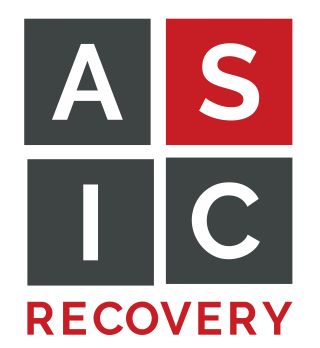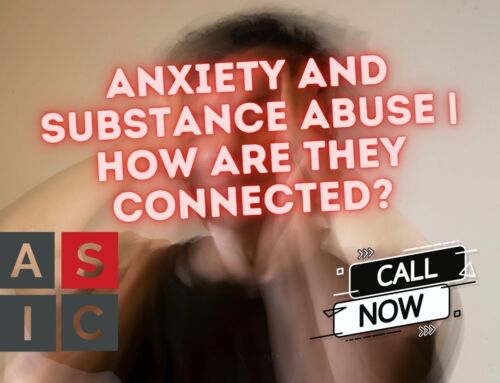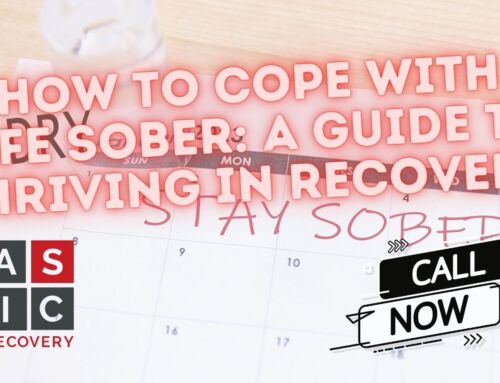Tramadol is a painkiller used to treat moderate-to-severe pain. It’s a widely prescribed medication and is considered to be a relatively safe drug, but it can be addictive, and coming off can lead to withdrawal symptoms.
If you’re considering quitting tramadol, you need to understand the potential symptoms of tramadol withdrawal and how to manage them.
What Is Tramadol?
Tramadol is synthetic opioid that’s similar to codeine and has a similar effect on the body. It works by blocking pain signals in the brain, reducing pain levels. It’s available in both immediate-release and extended-release formulations.
Tramadol is classified as a Schedule IV controlled substance, which means that it supposedly has a low potential for abuse and is supposedly considered safe for use.
However, tramadol is definitely habit-forming if taken for extended periods of time, especially if you have a history of opioid abuse and/or dependence. Tramadol is different from other opioids — even other synthetic opioids — in many ways and is known as having a “messy” chemistry. Tramadol has recently been recognized as being much more addictive and deadly than was previously thought.
If you have been taking tramadol for a long time and want to quit, you’re most likely going to go through withdrawal. Tramadol has a half-life of about 6–8 hours, but withdrawal is not similar in length to other short-acting opioids, like hydrocodone and oxycodone — it’s longer. Tramadol withdrawal is generally worse than withdrawal from other opioids for a number of reasons.
At ASIC Recovery, our Intensive Outpatient Program (IOP) is dedicated to helping individuals develop healthier habits and build a life in long term recovery.
Click to learn more.
Tramadol is Not Like Other Opioids
What most people don’t know is that the way your body metabolizes tramadol is different from how it metabolizes other opioids.
Yes, if you take tramadol, you’re going to have an opioid-like effect, but as the drug is metabolized, it breaks into several other drugs, one of which is an even more powerful opioid, and the other of which acts like an antidepressant.
You still get the opioid effects and the dangers that come with them — depressed breathing that can lead to death from overdose — but you also get the antidepressant effect, which is a boost in serotonin.
This by itself can be very dangerous — at high doses, an overload of serotonin can cause serotonin syndrome, a life-threatening condition that can result in seizures and death.
But if you’re trying to quit tramadol, you’re confronted with having to essentially quit an antidepressant at the same time.
When you come off an antidepressant, you get what’s called “discontinuation syndrome,” which is just another way of saying withdrawals. These symptoms can last a few weeks (and potentially much longer) and can include:
- Flu-like symptoms
- Insomnia
- Nausea
- Imbalance
- Sensory disturbances
- Hallucinations
- Hyperarousal
- Brain zaps/tingling
- Tremors
- Depression
- Aggression
- Anxiety
- Mood swings
- Seizures
The problem is that tramadol hasn’t been studied much, so scientists aren’t clear on just how long these symptoms can really last. There are reports of tramadol users who took the drug for decades and experienced withdrawal symptoms for over a year.
That’s not to say that you will experience this, but if you’re going through tramadol withdrawal, and you find that after a few weeks you’re still experiencing symptoms, you should know that you’re not alone.
Symptoms of Tramadol Withdrawal
When you stop taking tramadol, you may experience a range of withdrawal symptoms that are similar to coming off of other opioids in addition to those listed above. These symptoms can range from mild to severe. In most cases, you’ll likely want to go to a detox facility or rehab — it’s just not safe to detox from tramadol by yourself.
Common symptoms of tramadol withdrawal that mirror withdrawal symptoms from other opioids include:
- Nausea and vomiting
- Sweating/night sweats
- Muscle aches
- Diarrhea
- Rapid heart rate
- High blood pressure
- Increased sensitivity to pain
- Restless limbs
- Weakness/lack of energy
If you experience any of these symptoms, seek medical help immediately. Remember, withdrawal from tramadol is much different to withdrawal from other opioids. Even if you’re familiar with withdrawing from drugs like heroin or oxycodone, you shouldn’t apply that experience to tramadol.
Treatment Options for Tramadol Withdrawal
The most effective way to treat tramadol withdrawal is to gradually taper off the medication under the supervision of a doctor. Tapering means reducing the dosage of tramadol over a period of time, allowing the body to gradually adjust to the reduced levels of the drug.
This process is often done in a controlled environment such as a detox facility or hospital, where medical professionals can monitor your progress and provide assistance and support.
In some cases, medications may be prescribed to help ease withdrawal symptoms. These medications may include antidepressants, anticonvulsants, or anti-anxiety medications. The choice of medications will depend on your needs and your specific withdrawal symptoms.
If you’re going to seek treatment, then make sure the facility you’re going to is familiar with tramadol and has a specific treatment plan for patients who are addicted to it. The fact of the matter is that many doctors are unfamiliar with tramadol. Even those who are familiar with it may not be educated on its anti-depressant effects.
For many years, tramadol was marketed to doctors as a “safe alternative” to opioids. It’s only in the last decade or so that the antidepressant effects (and associated withdrawal symptoms) have come to light. Make sure you ask detailed questions about the unique withdrawal effects that you’re likely to experience. Ask the facility what they’re going to do to help you with those.
If they don’t have a good answer to those questions, you’ll want to seek treatment elsewhere.
Not all facilities or doctors are going to be willing to taper you off tramadol, so ask them if they will do a taper or not. While tapering is great, it’s very hard to do on your own, and if you’re truly addicted to tramadol, you’re not likely to taper successfully.
The Benefits of Tapering Off Tramadol
If you can find a facility willing to help you through a taper, then tapering off tramadol is the safest and most effective way to discontinue its use. Tapering off allows the body to gradually adjust to lower levels of the drug, which reduces the severity of withdrawal symptoms.
Tapering also reduces the risk of relapse and further addiction. Rather than throwing you directly into painful withdrawals, you slowly approach them. You have more time to come to terms psychologically with the fact that you’re going to feel them, but you also will know that they’re not going to be as bad, so when they finally hit, you’re able to deal with them more effectively.
This means you’re less likely to go back to tramadol to get rid of the withdrawal symptoms, which means you have a better chance of staying sober permanently.
Tramadol Withdrawal Timeline
The timeline of tramadol withdrawal varies from person to person, and yes, as mentioned above, some people have bad withdrawals for a long time, but for most people, a few weeks is all you have to get through.
During this time, withdrawal symptoms may come and go in intensity. Generally, the most intense withdrawal symptoms will be experienced in the first few days after discontinuing use, and they will gradually lessen over time.
Some symptoms might linger, so you need to find ways of distracting yourself while going through the withdrawal process. That’s one of the main benefits of rehab — it’s a safe place that teaches you how to live a sober life, but it also gives you plenty to do so that you’re not stuck dwelling on how you feel.
Preparing for Tramadol Withdrawal
Before beginning a tramadol taper, spend some time preparing. This means educating yourself on the potential side effects and withdrawal symptoms you may experience and having a plan in place for how you will manage those symptoms.
This can include making sure you have access to medical care, 12-step groups, or other resources that can help you through the process. For example, you might want to get involved in 12-step groups at the rehab you attend, or you might want to check out SMART recovery if you decide to withdraw on your own.
Tips for Smoothly Transitioning Off Tramadol
When transitioning off of tramadol, take it slow and to be gentle with yourself. If you decide to try to do this without going to rehab, at least make sure you’re under the care of a doctor who is helping you taper off.
Here are some tips to help make the process smoother:
- Speak to your doctor about your withdrawal plan (if you choose not to go to detox or rehab)
- Take your medications as prescribed
- Avoid triggers that may lead to relapse
- Stay hydrated and get plenty of rest
- Eat a healthy, balanced diet
- Exercise regularly
- Practice relaxation techniques such as yoga, meditation, or deep breathing
- Keep a journal to track your progress and document your thoughts and feelings
- Seek out a 12-step group or therapist for support
Managing Acute Tramadol Withdrawal Symptoms
During the acute phase of tramadol withdrawal, focus on managing the symptoms you are experiencing.
This may include taking medications to ease nausea or reduce anxiety. Be sure to practice relaxation techniques and to get plenty of rest (when possible).
For some people, going to detox for just a few days to get through the worst of the withdrawals may be a good idea. That way, you don’t have to take off a ton of time from work or school, but you have help available when the withdrawals are the worst (and most dangerous).
Managing Chronic Tramadol Withdrawal Symptoms
Chronic withdrawal symptoms may linger for weeks or even months after discontinuing tramadol. Be patient, and remember that this is a process. It will take time for your body to adjust.
During this time, practice self-care, such as eating a healthy diet, getting plenty of rest, and engaging in relaxation techniques. Right now is the most important time to focus on yourself and getting better.
The Importance of Mental Health
Withdrawal can have a huge impact on your emotions. You need to be aware of the potential for depression and anxiety. If you are feeling overwhelmed or anxious, seek help from a mental health professional.
If you’re in rehab, you’ll have them available right away, but if you’re not, you might want to set up appointments in advance so you have someone to talk to during the process.
A therapist or counselor can provide the support and guidance you need to cope with the challenging emotions that may arise during withdrawal. One of the biggest reasons people relapse is because the emotional toll of withdrawal can be completely overwhelming, so pay close attention to your emotional state and take action if necessary.
12-Step Groups for Tramadol Withdrawal
12-step groups can be a valuable resource during the tramadol withdrawal process (and afterward). They provide a safe space to share experiences and to connect with others who are going through similar challenges.
12-step groups can also provide much-needed emotional and social support. Getting a sponsor and going through the 12 steps can be a important way of preventing relapse. You’ll want to check out opioid-focused 12-step groups, like Opiates Anonymous or Heroin Anonymous.
Additionally, there are a variety of online resources, such as forums, blogs, and websites, that can provide information and support. Because tramadol is one of the less-well-known opioids, you might have trouble finding a local sponsor who has experience with it. You might need to find one online instead.
Long-Term Strategies for Avoiding Tramadol Relapse
Once you have successfully transitioned off of tramadol, put a plan in place to prevent relapse. This may include avoiding triggers, such as people or places associated with your tramadol use, or engaging in activities regularly that make you feel happy or good about yourself.
One of the best long-term strategies is to join a 12-step group, get a sponsor, and work the 12 steps. Alternatively, joining a SMART Recovery group or getting cognitive behavioral therapy can be immensely helpful.
Make sure to maintain a strong support system among family and friends and to seek help if it all becomes too much to handle. Regular check-ins with a therapist or doctor can also help prevent relapse.
IOP at ASIC Recovery
Are you looking for substance abuse treatment in Texas?
At ASIC Recovery, our Intensive Outpatient Program (IOP) is dedicated to helping individuals develop healthier coping skills and build a recovery supportive network in all aspects.
Click to learn more.



